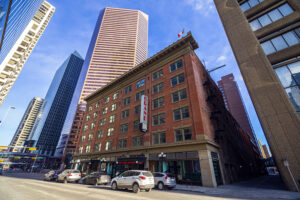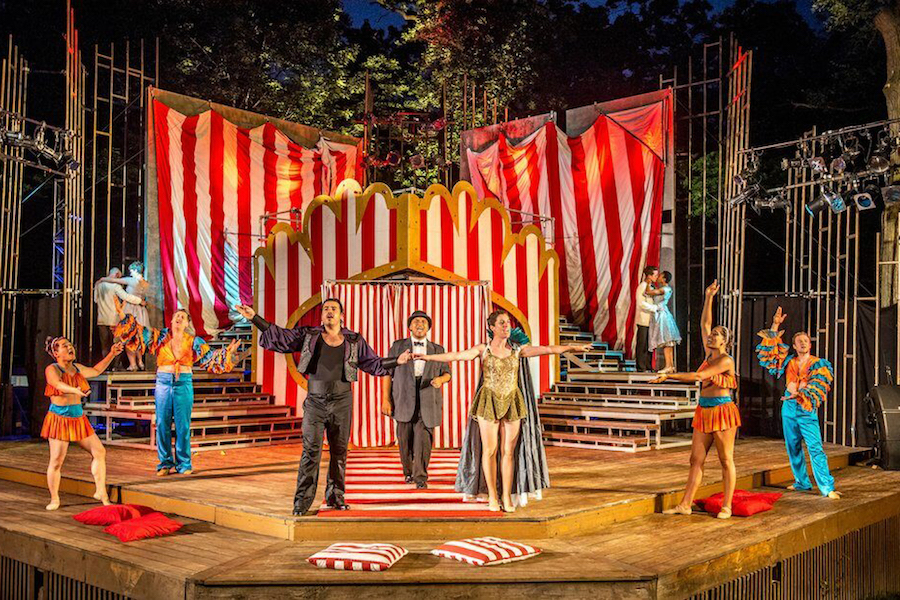The arts sector in Canada is at a turning point. Skyrocketing rents, rising operating costs, and shifting funding landscapes are putting pressure on arts organizations, venues, and festivals. But this moment of uncertainty also presents an opportunity — a chance to rethink how the arts are funded and supported.
Arts organizations have an opportunity to take control of their futures. By embracing innovative models like community bonds, organizations can secure their spaces, access values-aligned financing, and strengthen community connections – ensuring creativity thrives for years to come.
By the numbers: the arts are at risk

Calgary’s The GRAND Theatre. Source: LiveWire Calgary
- Venues are at risk. Rising rents have threatened the relocation or closure of longstanding local venues like Calgary’s GRAND Theatre et Toronto’s Phoenix Concert Theatre.
- Government funding is shrinking. The Canada Council for the Arts faces cuts de $7.33M in 2025, et $9.88M in 2026, even as demand for funding triples.
- Corporate sponsorships are pulling back. Bell ended its $5M annual sponsorship of the Toronto International Film Festival after 28 years, and Scotiabank exited its 15-year partnership with the Toronto Contact Photography Festival.
- Costs are soaring. The Professional Association of Canadian Theatres reports that operating costs for its members have risen by up to 41% since 2019, while audience attendance remains 45% lower than pre-pandemic levels.
- Festivals are struggling. The Shaw Festival reported a $5.7M deficit in 2023, its largest ever, forcing operational cuts in 2024. Just for Laughs Toronto cancelled all 2024 shows as its parent company tried to avoid bankruptcy (don’t worry, they were bought by a new company, ComediHa). Sled Island and other festivals are downsizing due to rising costs.
It’s clear that traditional funding models aren’t always enough. That’s where community bonds come in.
What are community bonds?
Community bonds are a social finance tool that allows fans, artists, and supporters to invest in the cultural spaces they care about. Investors earn a modest return, while organizations secure stable funding. It’s a win-win for both the organization and the community.
Organizations like RadStorm (Halifax) and Hugh’s Room Live (Toronto) are already using this model successfully.
It’s important to note that community bonds aren’t the right fit for every organization. They work best for organizations with revenue models that can support loan repayment. While grants and other funding sources remain essential, for those that can manage debt, community bonds provide a strong alternative.

Theatre performance. Source: Now Toronto
3 reasons why arts & cultural hubs should consider community bonds
🔒 Long-term stability and financial independence
Arts organizations often rely on short-term leases and unpredictable funding, making them vulnerable to displacement. And while government funding isn’t disappearing, it is shifting. Community bonds offer a way for organizations to take control of their financial future by raising capital directly from their supporters. Instead of waiting on grant cycles or sponsorship deals, organizations can mobilize their audience as investors.
Community bonds can be used to purchase buildings, secure long-term leases, or fund major renovations, ensuring cultural spaces remain a permanent fixture in their communities. Plus, since investors are passionate supporters, organizations can work with them to set terms that better align with their needs, ensuring flexible and sustainable financing.
🙌 Values-aligned financing
Unlike corporate sponsorships, which may influence artistic direction, community bonds keep decision-making in the hands of the people who love these spaces most.
Arts & cultural hubs thrive on collaboration, shared ownership, and community – all principles that make community bonds a natural fit. Plus, community bonds ensure funding stays within the local economy rather than flowing to external investors.
👪 Strengthened community connections
Community bonds turn audience members, fans, and local supporters into investors and long-term ambassadors. Through targeted outreach and investor consultations, organizations can:
- Engage new and existing supporters in a deeper, more meaningful way
- Foster a shared sense of ownership, reinforcing that arts spaces truly do belong to everyone
- Cultivate long-term ambassadors who actively promote events and programming
And the demand is there: Canadians planned to spend $1,377 on arts & cultural events in 2024, an increase from previous years. Community bonds let supporters invest in the spaces they love, going beyond just ticket purchases or one-time donations.
It’s time to rethink how we fund the arts
Community bonds offer arts and cultural organizations a sustainable, community-driven way to secure their future. By harnessing the power of their supporters, organizations can gain long-term stability, access values-aligned financing, and strengthen community connections.
This is our chance to redefine how we support the arts.
Want to learn more about how community bonds can work for your arts organization? Read more here, or connect with our team.

